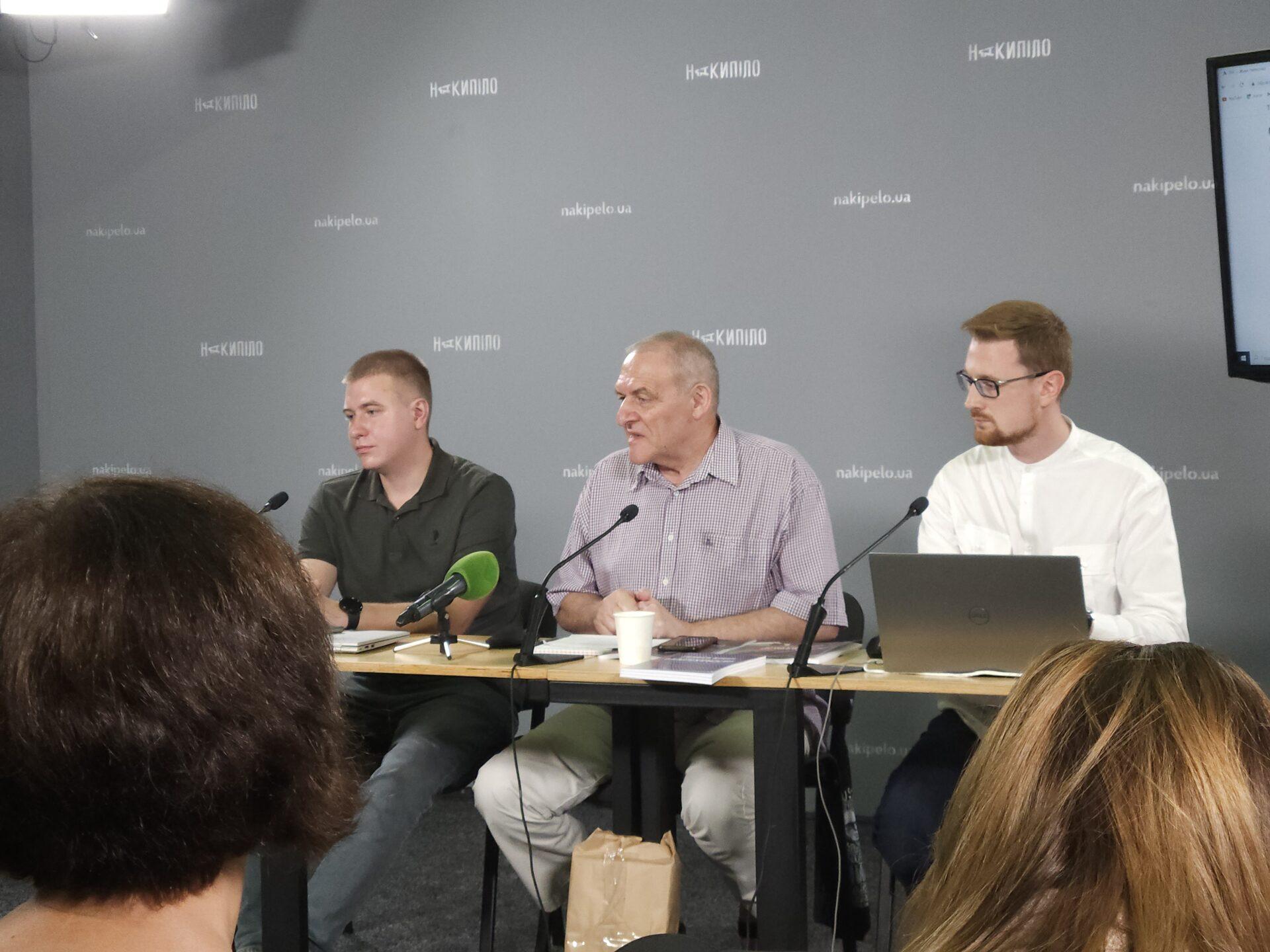Shelling of civilians: The T4P Initiative has prepared a submission to the International Criminal Court

On August 22, the T4P Initiative presented a document to the International Criminal Court regarding attacks on Ukrainian civilians by Russian troops. Since the full-scale invasion of Ukraine began, the “Tribunal for Putin” initiative has recorded almost 48,000 instances of war crimes. The majority of these cases, over 80%, involve attacks on civilians and civilian infrastructure. In order to hold the perpetrators accountable and seek justice, the Tribunal for Putin initiative compiled and organized data on attacks on civilian targets and submitted it to the International Criminal Court.
Evhen Zakharov, the director of Kharkiv Human Rights Protection Group (KhPG), explains, “There are so many war crimes that investigating them could take decades. However, where will the witnesses, victims, and evidence be during this time? That’s why we aim to highlight the most widespread and brutal war crimes that demand accountability from those responsible.”
The global initiative T4P (Tribunal for Putin) was established in response to Russia’s full-scale military aggression against Ukraine in February 2022. The Kharkiv Human Rights Protection Group (KhPG), Ukrainian Helsinki Human Rights Union (UHHRU), and Center for Civil Liberties (CCL) are the founders of this initiative. The T4P initiative also includes 24 non-governmental organizations for human rights. Participants of the initiative document cases that exhibit signs of war crimes, as defined by the Rome Statute of the International Criminal Court (genocide, crimes against humanity, and war crimes), across all regions of Ukraine.
Statistics
From February 24, 2022, to April 30, 2023, the Tribunal for Putin (T4P) initiative recorded 32,451 attacks on civilian objects and populations using various types of weapons. The highest number of attacks occurred in the Kharkiv region, totaling 7,800. On average, Russia bombards civilian targets 75 times per day. Detailed statistics on these attacks can be found in the analytical material published on the T4P website.
As of April 30, 2023, the T4P database reported 24,637 civilian casualties (deceased, injured, and missing). In approximately 90% of cases, these losses resulted from shelling. Populations in border areas where Russian forces have advanced suffered the most. Comprehensive statistics on civilian casualties during this period are available here.
The global initiative “Tribunal for Putin” created a database specifically for collecting, processing, and analyzing information about war crimes between 2016 and 2017. The database has been significantly enhanced since the onset of the full-scale war. Over 50 recorders contributed to its development. From the war’s early days, they began documenting alleged international crime cases using open sources. In April 2022, monitoring groups started visiting shelling-affected locations in Kharkivshchyna, Sumshchyna, Kyivshchyna, and Chernihivshchyna and areas with concentrated internally displaced persons from occupied territories. Additionally, KhPG utilizes civil quadcopters (drones) to record war crime cases.
In the Sumy region, T4P documenters have to work in hazardous areas, even under fire. Among other things, they visit the only operating crossing point on the border with Russia. Up to a hundred of our fellow citizens return to Ukrainian territory through it every day.
Nataliia Yesina, who documents war crimes in the Sumy Oblast and represents the Northern Human Rights Protection Group, says, “People are confused and stressed out. People do not make contact; they work with psychologists, and before this, they are checked by the Ukrainian security service. Following this, they are reluctant to go to the documenting procedure; yet I hope that in a calmer environment, in safety, they will be able to retell their ordeal.”
The number of civilians harmed due to shelling is constantly rising. Nataliia Yesina is sure that the shelling is intended to harm civilian infrastructure and civilians.”
Now, even the most detailed statistics do not reflect the actual state of affairs, as some regions have long been inaccessible for documentation.
Ihor Brynosh, who documents war crimes in the Odesa oblast and represents the Committee of Voters of Ukraine in Odesa, has said that communities are under shelling. “We have had more data from open sources concerning Mykolaiv, greater access to the city, and, accordingly, in this city, we have recorded a greater amount of damage and destruction of civilian objects. In other communities under constant shelling by the Russian soldiers, which in most cases are communities between the Mykolaiv and Kherson oblasts, the whole villages are totally destroyed. It is here where we see the opportunity for the “field mode” documentation.
The essence of the crime
The Rome Statute distinguishes four crimes concerning the shelling of civilian objects and population:
- Intentionally directing attacks at the civilian population;
- Intentionally directing attacks at the civilian objects;
- Intentionally attacking, with the awareness that such an attack will cause accidental death or injuries to civilians or damage civilian objects;
- Intentionally directing attacks at buildings designed for religious, educational, artistic, scientific, or charitable purposes, at historical monuments, hospitals, and places with high numbers of the sick and the wounded, provided they are not military targets.
Many Russians attacks have elements and the objective elements of all these crimes – in particular, when the Russians use imprecise weaponry, multiple launch rocket systems, and anti-ship missiles.
Maksym Revyakin, an expert at the Kharkiv Human Rights Group and the co-author of the submission, says, “From the standpoint of proving, it must be the most difficult crime, as shelling is done either from the territory of the Russian Federation, or the occupied areas. Even at the stage of gathering evidence, our law enforcement agencies have limited resources, they do not have access to witnesses, and they do not have access to material evidence. Even if a certain crime is under investigation, these agencies are incapable of bringing the responsible to justice, as these people are on the territory of the Russian Federation. As of June 2023, only five judgments have been made concerning the executors of the shelling. These judgments deal with prisoners of war. That is, our law enforcement agencies can bring culprits to responsibility only in isolated cases when a person executing shelling is captured.”
Did the Russian soldiers know they were attacking civilian objects?
According to the Rome Statute, the crime must be committed with intent and knowledge. Did the occupying forces intend to attack the civilian population?
“We analyzed open-source data about Russian military formations that were on Ukrainian territory and found information about the leadership of those units. And we believe that, due to subjective external circumstances, they must have been aware that their attacks would harm civilians and civilian objects. They either must have had a direct intent or acted with indifference and imprudence. When somebody gives an order to shoot at a densely populated area from a volley fire system, they must be aware that the blast radius exceeds 400–500 meters and, in addition to the military targets, affects the civilian population,” says Maksym Revyakin.
Non-precision weapons are widely used by the Russian soldiers, who know the technical characteristics of such weapons and are aware of the extent of the damage they cause. Furthermore, oftentimes, there were no military targets near the point of impact, so the Russians must have targeted the civilian population.
What comes next for the submission
Maksym Revyakin: “To submit an application to the ICC, we must collect a certain amount of information that meets of the standards developed by the ICC and Eurojust regarding the documentation of war crimes, methodology, storage of information, etc. After that, we analyze everything and present it to the Office of the Prosecutor of the ICC. We declare that we have a certain amount of information on war crimes and, as an example, transfer anonymized cases with encrypted personal data to the ICC. If the the Office of the Prosecutor of the ICC is interested in a particular case, we provide access to our database or to individual cases that interest them. Only the ICC itself may choose what to investigate. There is no way to influence its decision”
Yevhen Zakharov: “In the previous phase of the war, the Kharkiv Human Rights Group already sent submissions about Russian crimes to the ICC. At the time, there were 16,800 civilian victims of the [Russian] crimes in our database. We wrote three submissions: about violent crimes committed during the armed conflict, about missing persons, and about Ukrainians who remained in penal institutions on the territory not [currently] controlled by Ukraine. Now, we will send submissions and cases synchronously. Each submission will be accompanied by a complete set of cases, which will provide insights into the scope, character, and geography of the crime. This will be happening from the end of August and throughout the next few months. Our goal is to bring those who committed the crimes to justice as well as to provide protection and assistance to the victims of the crimes.”
The full version of the submission is available in the Kharkiv Human Rights Group online library.
This event is the first in a series of submissions to the International Criminal Court by the Tribunal for Putin initiative. The next event will take place on August 28 at 11:00 in Kyiv, at the address: 8/16 Bandana Khmelnytskoho street (Ukraine Media Center — UKRINFORM). The topic of the event: “Genocide in Mariupol. Legal Justification of the International Crime.”
The submission was prepared with the support of the US Embassy in Ukraine.

